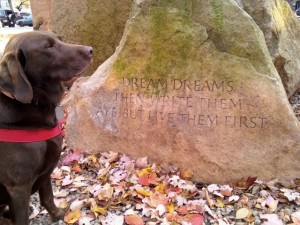This is a really great (and complex) topic that Chrisie raises. Much of the digitization that occurs in libraries, museums, and memory projects is done for the purpose of making their collections, especially their special collections, accessible to a wider audience; collections that previously would only have been available on-site, and primarily for the purpose of scholarly research are now available online. Imagine a group of Chrisie’s fifth graders going into the Beinecke Rare Book and Manuscript Library at Yale on their own and asking to see one of their Illuminated manuscripts! Because Yale has digitized their medieval and Renaissance manuscripts, the same group of students can access them online, through Yale’s Beinecke Digital Images Database.
Now, did the act of digitizing the manuscripts preserve them? No. The manuscripts in their physical form are preserved through conservation efforts and proper storage. Many times the act of digitization brings attention to the value of the collection and can increase the likelihood that it will be preserved.
One way that digitizing helps to preserve the physical item, though, is by giving access to it without the need to handle it. Aside from environmental factors that can lead to the deterioration of books, manuscripts, artifacts, etc., every time you handle a fragile item, you increase the risk of damaging it. So while digitizing doesn’t actually preserve the item, the end result is that it will be able to be accessed without being handled.
Now, in the event that a collection is lost or damaged due to catastrophic conditions – think Hurricane Katrina – the intellectual content of the item and access to that has been preserved if it has been digitized and the files have been stored safely in a number of locations (think LOCKSS – Lots Of Copies Keeps Stuff Safe). But the actual collection hasn’t been preserved.
Preserving digital files is another matter altogether. This has to do with migrating files to new formats BEFORE access to their current format becomes obsolete (think 8-track tapes). So really, the digitization process actually creates the need for digital preservation, not the other way around.
In answer to your question about what are we digitizing, images or full text, that depends on the item. If we are given a photograph, we are scanning the image as a TIFF. When we are scanning a letter, our goal can be to gain access to the content of the letter, or it can be to capture the letter as an artifact, or it can be both of these reasons. If my goal is to capture the letter as an artifact, then I scan it as a TIFF and transcribe the content in the “document” item type metadata. If the content of the letter is what is most important, then I scan it as a PDF/A – an archival quality PDF, which is actually an image. Because it is an image, we apply Optical Scanning Recognition (OCR) to the image which makes it a searchable document. So, if I care more about the visual aspect of the letter, a TIFF is best. If I care more about the content, then a PDF/A is best. Hope this clarifies your question a bit.


